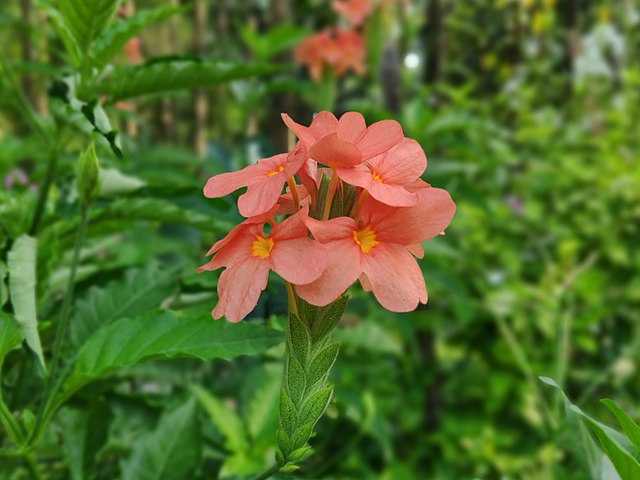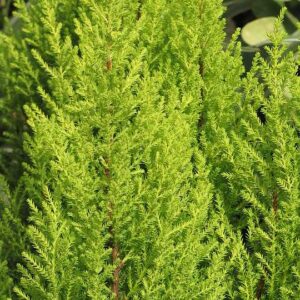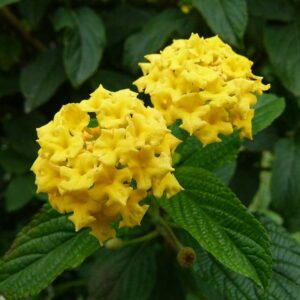Introduction
Crossandra, also known as Kanakambaram and scientifically named Crossandra infundibuliformis, is a flowering plant that is native to southern India and Sri Lanka. It belongs to the Acanthaceae family and is widely cultivated as an ornamental plant in tropical and subtropical regions around the world. It is a small shrub that typically grows up to 1 meter in height.
Crossandra produces masses of small, brightly-colored flowers that resemble fireworks. It is a great choice for adding color and texture to borders, containers, and mixed plantings.
For a stunning garden, consider pairing your Crossandra plant with a Hibiscus plant or a Schefflera plant.
The Hibiscus plant has showy, trumpet-shaped blooms that will contrast beautifully with the Crossandra’s small, clustered flowers. The Schefflera plant has large, glossy leaves that will provide a bold and lush backdrop for the Crossandra.
Click on the headings to read more!
Flower
- Crossandra flowers are bright orange and tubular-shaped, measuring about 2-3 centimeters long.
- The flowers emerge on upright stems above the foliage, and have a funnel-like shape with a flared, five-lobed tip.
- Petals of the flowers are fused together to form a tube, and the stamens and stigma are located inside the tube.
- These flowers are very showy and attractive, blooming in the summer and fall months and lasting for several weeks.
- Crossandra plants produce flowers throughout the growing season, attracting bees, butterflies, and other pollinators to gardens.
- The flowers of the plant are often used in perfumes and fragrances due to their pleasant aroma.
Benefits
Ornamental value
The bright orange, tubular-shaped flowers of Crossandra make it a popular ornamental plant. It is widely cultivated as an ornamental plant for its attractive flowers and foliage (1).
Medicinal uses
In traditional Ayurvedic medicine, Crossandra has been used for various medicinal purposes, including as a treatment for skin disorders and digestive problems.
Landscaping
Crossandra is often used as a border plant or ground cover in landscaping due to its ability to tolerate heat and drought. It prefers well-draining soil and partial shade to full sun exposure.
Environmental benefits
The bright flowers of Crossandra can attract bees, butterflies, and other pollinators to gardens, helping to support local ecosystems.
Aromatic properties
The flowers of Crossandra have a pleasant aroma and are often used in perfumes and fragrances.
Plant care
Lighting:
Crossandra prefers bright, indirect sunlight or partial shade. Direct sunlight may cause the plant to wilt or burn.
Watering:
Keep the soil moist but not waterlogged. Water once or twice a week during the growing season, and less frequently during the winter months. Water the soil around the base of the plant, taking care not to get water on the leaves or flowers, as this can cause fungal diseases.
Fertilization:
Fertilize crossandra plants every 2-3 weeks during the growing season, which is typically from spring through summer.
Use a balanced, water-soluble fertilizer that is specifically formulated for flowering plants. A fertilizer with an NPK ratio of 10-10-10 or 20-20-20 is ideal for crossandra.
Pruning:
Prune the plant in the spring to remove any dead or diseased foliage. You can also pinch back the tips of the stems to promote bushier growth and more flowers.
Propagation:
Crossandra can be propagated by stem cuttings taken in the spring or summer. Dip the cuttings in rooting hormone and plant in a well-draining potting mix. Keep the soil moist and provide bright, indirect sunlight until the new plants are established.
Temperature and Humidity:
Crossandra prefers warm temperatures and high humidity. It is a tropical plant and can be damaged by cold temperatures or drafts.
Soil:
The ideal soil type for crossandra is well-draining and rich in organic matter, which can help hold moisture without causing waterlogging.
Additionally, crossandra plants prefer soil with a pH between 6.0 and 7.0. By adding organic matter such as compost or well-rotted manure, you can provide the optimal conditions for your plat to thrive.
Diseases and prevention
Here are some common diseases that can affect crossandra and prevention methods:
Leaf spot:
Leaf spot is a fungal disease that causes circular or irregular brown spots on the leaves. It can be prevented by providing good air circulation around the plant, avoiding getting water on the leaves, and removing any infected foliage immediately.
Powdery mildew:
Powdery mildew is a fungal disease that causes a white, powdery coating on the leaves and flowers. It can be prevented by avoiding overwatering the plant, providing good air circulation, and removing any infected foliage.
Root rot:
Overwatering or poorly draining soil can cause root rot, which is a fungal disease that affects the plant. It causes the plant to wilt and the leaves to turn yellow or brown. Make sure the soil is well-draining and avoid overwatering the plant to prevent root rot.
Spider mites:
Spider mites are tiny pests that can infest crossandra plants and cause yellowing leaves and webbing on the plant. To prevent spider mites, regularly inspect the plant for signs of infestation, provide good air circulation, and avoid over-fertilizing the plant.
Aphids:
Aphids are small, soft-bodied insects that can suck the sap from crossandra plants and cause stunted growth and distorted leaves. To prevent aphids, regularly inspect the plant for signs of infestation, wash the plant with a mild soap solution, and remove any infected foliage.



